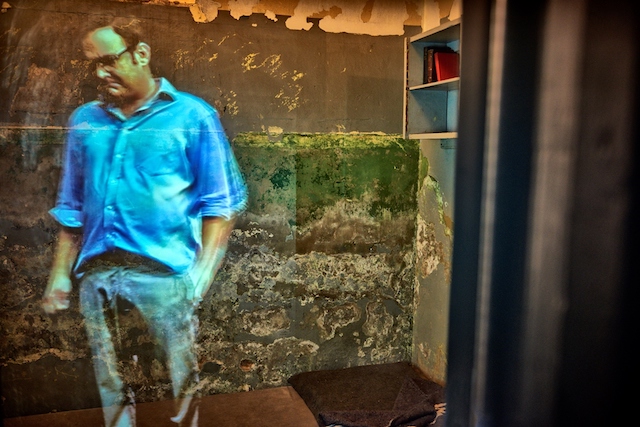Visitor attractions form the backbone of tourism, but to ensure continued growth in visitor numbers tourism destinations will need to stay on the forefront of global visitor attraction trends and technologies.
Tourism is one of South Africa’s most reliable economic sectors for showing growth. According to the Department of Tourism, tourism contributed R136.1 billion (about 2.9%) to the total gross domestic product (GDP) in 2017. The department also identified the potential for this sector to grow from around 1.5 million jobs to 2.1 million over the next decade.
As a major tourist destination, South Africa has much to offer international and local travellers – of which 10.3 million and 17.2 million were recorded respectively in South African Tourism’s most recent annual report.
But how do visitor attractions ensure they are the first choice for tourists?
“South Africa has a lot to offer, but we cannot lean back and rely on Table Mountain, Safari parks and Robben Island,” Wolf says, “there are still major opportunities for visitor attractions along the major tourism routes.”
Michael Wolf is CEO of Formula D Interactive, an attraction and visitor experience design consultancy. He says that attractions need the right mix of uniqueness, thematic relevance and wow-factor.
Laws of attraction
Tourists visiting regions with more attractions tended to stay longer. Although the Western Cape received only the third highest number of international visitors, compared to other provinces, visitors stay on average 14 days and spend almost double that of other provinces, according to the tourism annual report.
The top attractions visited include the V&A Waterfront, with over 1.16 million visitors and Cape Point with over 940 000 visitors. The Table Mountain Cable Way had 799 000 visitors. Comparatively, the Kruger Park saw over 390 000 people pass through the gates, while the Apartheid Museum had 301 000 visitors in the same year. Other landmarks receiving high visitor foot traffic included Robben Island (331000 visitors), Mandela House in Soweto (234 000 visitors) and Constitution Hill (111 000 visitors).
“Like any other product or service, tourism destinations compete against each other for visitor numbers, drawing on factors such as novelty, unique selling prepositions, and relevance to the potential audiences,” Wolf explains. “Regions in South Africa that are not as well positioned as the Western Cape would do good to strategically develop flagship tourism experiences to increase their attraction value in a growing industry.”

Embrace innovation
Last year, Formula D was commissioned to lead a massive visitor experience upgrade at The Old Fort on the Constitution Hill precinct, by using technology and innovative design to showcase South Africa’s history and journey to democracy. The exhibits included cutting edge innovations, like a hologram of Joe Slovo, bringing him back to life in a cell.
It’s this kind of innovation that visitor centres need to adopt in order to remain relevant to their audience, Wolf explains.
“It’s crucial that the tourism industry considers international trends and the exact needs of the target audiences. Innovation in attractions design doesn’t necessarily mean that the content of the offerings is revolutionised. We believe that innovation can be expected when classical formats are being disrupted.”
International research indicates that tourists are constantly requiring new attractions or more innovation at old ones. Modern visitor centres are employing a model of “Entertainment, Excitement and Education”. This has seen tourism destinations looking at ways to entertain visitors, excite them – often using adrenalin-inducing activities such as at amusement parks, and to provide thought-provoking content or opportunities for reflection.
Wolf adds: “We will see more and more shopping malls that become in parts museums, family outings that are informal learning spaces, or petrol stations with major roadside tourism offerings.”
Formula D will soon see the launch of their latest project, which is an innovative mixture of family entertainment, gaming arcade and learning centre.
The tech trend
Embracing social media, immersive audio-visual technology and virtual reality will become important to the future of tourism destinations, Wolf believes.
According to presentations at Attractions Africa’s 2018 conference, by next year millennials are expected to make 50% of global travellers, with around 300 million trips. In the next 5 to 10 years, these millennial travellers will become the industry’s core base. With their more tech-savvy approach, millennials are changing the way travel is consumed and visitor centres will have to develop more technologically appealing offerings. Tourist attractions will also have to adapt to include new experiences, such as audio tours and digital signboards, as well as real-time social media engagement.
Formula D has worked with clients around the world using innovative strategies and technologies to boost the attraction value of visitor centres and heritage sites – including of things that may not always be available, Wolf adds.
“We hear that there haven’t been many Great White Sharks on the coast of South African this year, which has a huge impact on the shark viewing boat operators. What if they had a visitor centre which gives visitors an unforgettable shark experience generated by immersive audio-visual technology?”
Formula D know what they are talking about: They have developed an 18 x 3 metre immersive Gulf Stream Experience for the Patricia and Philip Frost Museum of Science in Miami, Florida, treating visitors to a lifelike, yet virtual experience of rare marine life that cannot be held in captivity.




























